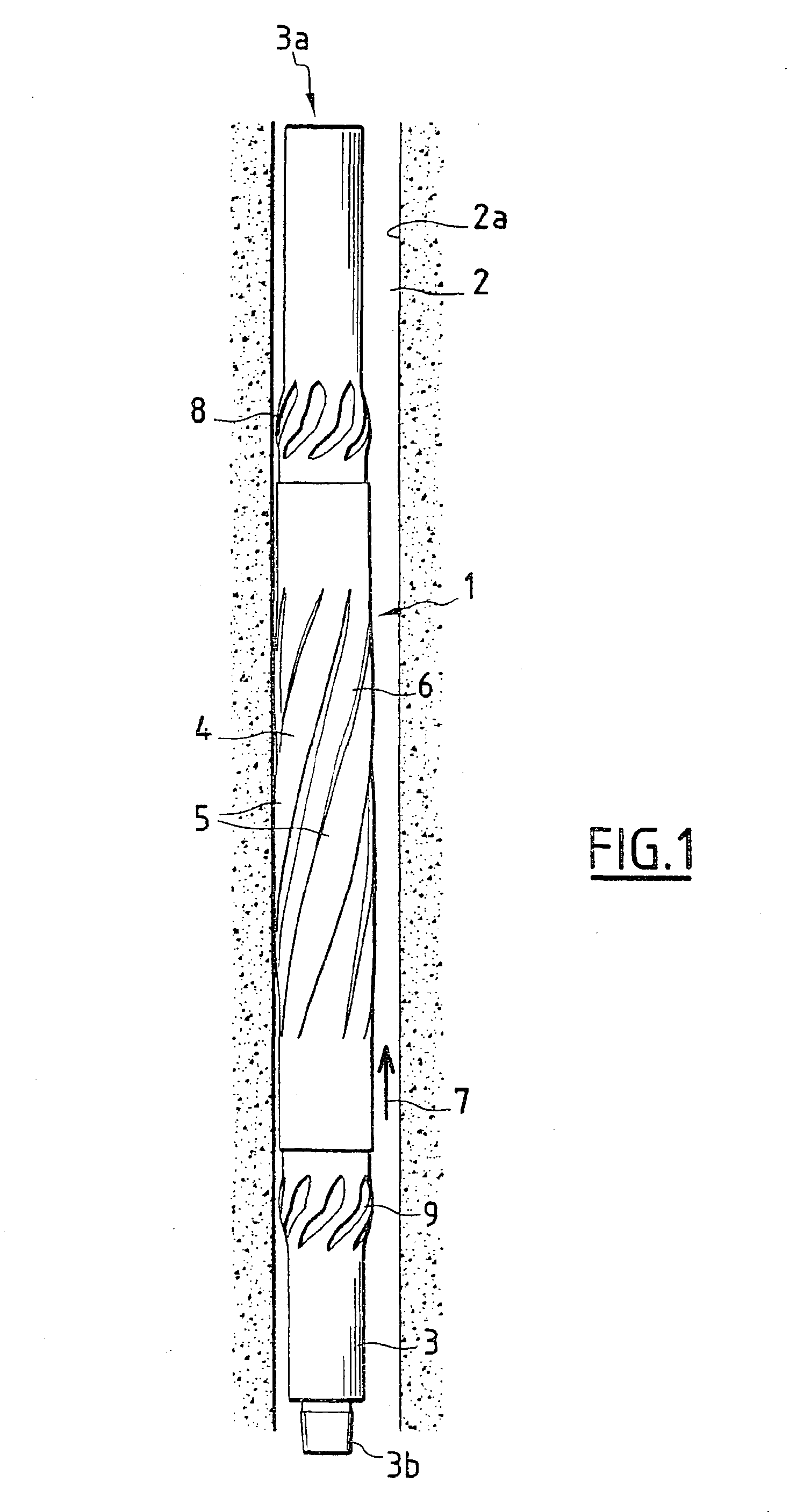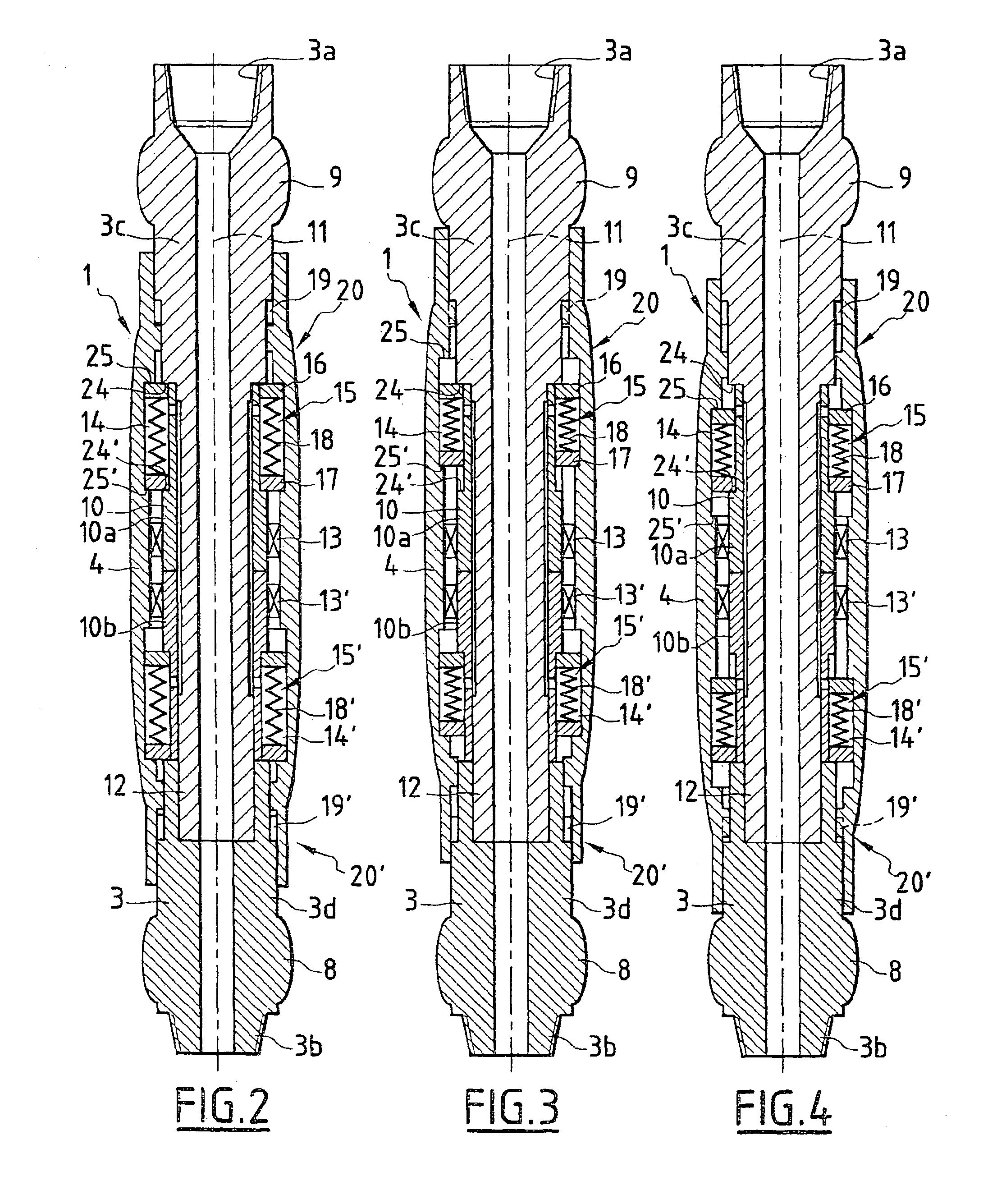Stabilizer device for rotary string of drill rods with reduced friction
a stabiliser device and rotary string technology, which is applied in the direction of drill bits, drilling accessories, earthwork drilling and mining, etc., can solve the problems of insufficient stability of the position, difficulty in perfect control of the displacement of the contact element of the stabiliser, and complete jamming of the drill string, so as to reduce the friction of the stabiliser
- Summary
- Abstract
- Description
- Claims
- Application Information
AI Technical Summary
Benefits of technology
Problems solved by technology
Method used
Image
Examples
Embodiment Construction
[0046]FIG. 1 shows a stabiliser according to the invention, designated overall by the reference numeral 1, in the operating position in the interior of a borehole 2 produced by a tool of a string of drill rods on which the stabiliser 1 is interposed which is intended to ensure the centring and the guiding of the drill string in the borehole before the drilling advances.
[0047]The stabiliser 1 has a central body 3 on which is mounted a tubular element 4 which constitutes the external casing for contact of the stabiliser with the wall 2a of the borehole 2.
[0048]The body 3 of the stabiliser has at a first axial end 3a, or upper end, and at a second axial end 3b, or lower end, respectively a female screw connection element and a male screw connection element.
[0049]The threaded connecting parts 3a and 3b of the stabiliser which are produced in the form of a tapped part and a threaded part in the shape of a truncated cone are conventional elements in the case of drilling equipment and perm...
PUM
 Login to View More
Login to View More Abstract
Description
Claims
Application Information
 Login to View More
Login to View More - R&D
- Intellectual Property
- Life Sciences
- Materials
- Tech Scout
- Unparalleled Data Quality
- Higher Quality Content
- 60% Fewer Hallucinations
Browse by: Latest US Patents, China's latest patents, Technical Efficacy Thesaurus, Application Domain, Technology Topic, Popular Technical Reports.
© 2025 PatSnap. All rights reserved.Legal|Privacy policy|Modern Slavery Act Transparency Statement|Sitemap|About US| Contact US: help@patsnap.com



